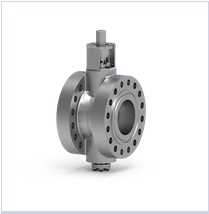Apr-2008
Cracking heater convection retrofit with integral SCR
When faced with a state-imposed mandate to reduce NOx emissions from a steam cracker, Chevron Phillips Chemical Company LP (CPChem) determined that the most advantageous solution would be a retrofit of new convection sections on the existing 13 cracking furnaces, incorporating both integral steam superheating coils and integral selective catalytic reduction (SCR) for NOx removal.
Mark S Karrs, Lummus Technology Heat Transfer
Philip S Crepinsek, Chevron Phillips Chemical Company
Viewed : 8053
Article Summary
This allowed CPChem to reduce stack heat losses as well as NOx emissions in the cracking heaters, while completely idling a low-efficiency steam superheater and avoiding the NOx generated therein.
Technical and design issues were addressed by a team incorporating members of CPChem; Lummus Technology Heat Transfer, which provided the heater thermal and mechanical design; and KBR, which engineered the ammonia delivery system and erected the new convection modules. Significant design issues needed to be addressed, in terms of the design of the ammonia delivery system and the ammonia injection grid (AIG). As the revamp of the convection sections required additional heating surface for higher thermal efficiency and also new services (steam superheat), the height of the convection section would increase by 30ft over the existing design. The associated increases in dead weight and wind load imposed on the structural members and foundations were concerns that ultimately required some additional bracing and fortifications of the supporting steel.
In order to minimise the overall height, a very compact design was developed for the AIG that allowed it to be located a short 6ft below the catalyst face. Heat transfer surface was located between the AIG and catalyst face to further reduce the height and promote mixing of the dilute ammonia with flue gas. Computational fluid dynamic (CFD) modelling allowed the grid design to be optimised for ammonia mixing, while external controls allowed the ammonia distribution to be biased to match any potential NOx maldistribution.
Project execution planning for a major revamp in an operating unit, while minimising lost production due to heater downtime, is key to any cracking heater SCR retrofit. Detailed and specific execution planning allowed 12 of the 13 cracking furnaces to be revamped in a 122-day period surrounding the plant turnaround, with eight of these furnaces revamped during the 52-day turnaround while the plant was down.
The ethylene plant steam and fuel balances were impacted significantly by the revamp and the shutdown of the low-efficiency steam superheater. The overall thermal efficiency of the cracker was improved from 83% to 92% LHV. Net fuel consumption was decreased by 150 MMBtu/hr (firing avoided), at equal throughput.
Plant operating data is presented for the first heater (recycle heater) that was revamped, which has been in operation since 3Q 2003.
Cedar Bayou NOx reduction project
When faced with a state-imposed mandate to reduce NOx emissions from a steam cracker, CPChem decided to investigate a variety of conceptual options that could reduce the NOx generated in the fired equipment associated with the existing Cedar Bayou olefins plant. A conceptual study was commissioned from Lummus Technology Heat Transfer to evaluate various revamp options from a technical perspective and rank such options by economics. The largest fired sources were the 13 cracking furnaces, the associated fired steam superheater handling the saturated steam make from the furnaces, and the 600# boilers that provide steam for startup and process use.
Conceptual phase
Decisions regarding project implementation and funding must take into account many factors in addition to the capital cost. In world-scale units, operating costs are significant, and the costs of lost production associated with downtime while revamping must also be considered. Other “soft issues” such as equipment reliability and maintenance costs are difficult to quantify, but will also impact the unit profitability and should be included in the decision-making process.
Although not favoured as the lowest capital cost option to reach compliance, CPChem determined that the most advantageous solution would be a retrofit of new convection sections on the existing 13 cracking furnaces, incorporating both integral steam superheating coils and integral SCR for NOx removal. This allowed CPChem to reduce stack heat losses as well as NOx emissions from the cracking heaters, while completely idling the low-efficiency steam superheater and avoiding the NOx generated therein.
Factors that entered into this decision included:
• The existing convection coils in the cracking heaters (built in 1979) were essentially at end-of-life. Numerous tube leaks were driving up maintenance costs
• NOx from the steam superheater would be reduced by 100%, with only the nominal cost associated with idling that equipment. Due to capacity expansions, this furnace was operating far above the design capacity, with a stack temperature at 545°F
• The fired steam superheaters (Figure 3) were handling essentially all the 1500 psig steam produced in the plant. Any failure in this relatively old and high-maintenance equipment (eg, tube rupture, burner or control failure) would take the entire cracker down.
If applied to these large emitters, the deep NOx reduction achievable with SCR would allow other contemplated NOx projects on smaller sources to be completely avoided, while maintaining the overall reduction targets.
Front end engineering
Front end process and heater design engineering were done in order to confirm the feasibility of the technical approach and generate a capital cost estimate that would be the basis for capital funding of the project.
Technical and design issues were addressed by a team incorporating members of CPChem’s project and operations groups; Lummus Technology Heat Transfer, which provided the heater thermal, mechanical and SCR design; and Haldor Topsøe, which supplied the SCR catalyst. A team approach - combining the expertise of the client’s operations staff, the technology supplier and the catalyst vendor — was critical in the effort to establish the design requirements and a suitable configuration that would meet the expectations of the plant operations and maintenance staff.
Categories:
Add your rating:
Current Rating: 3

















